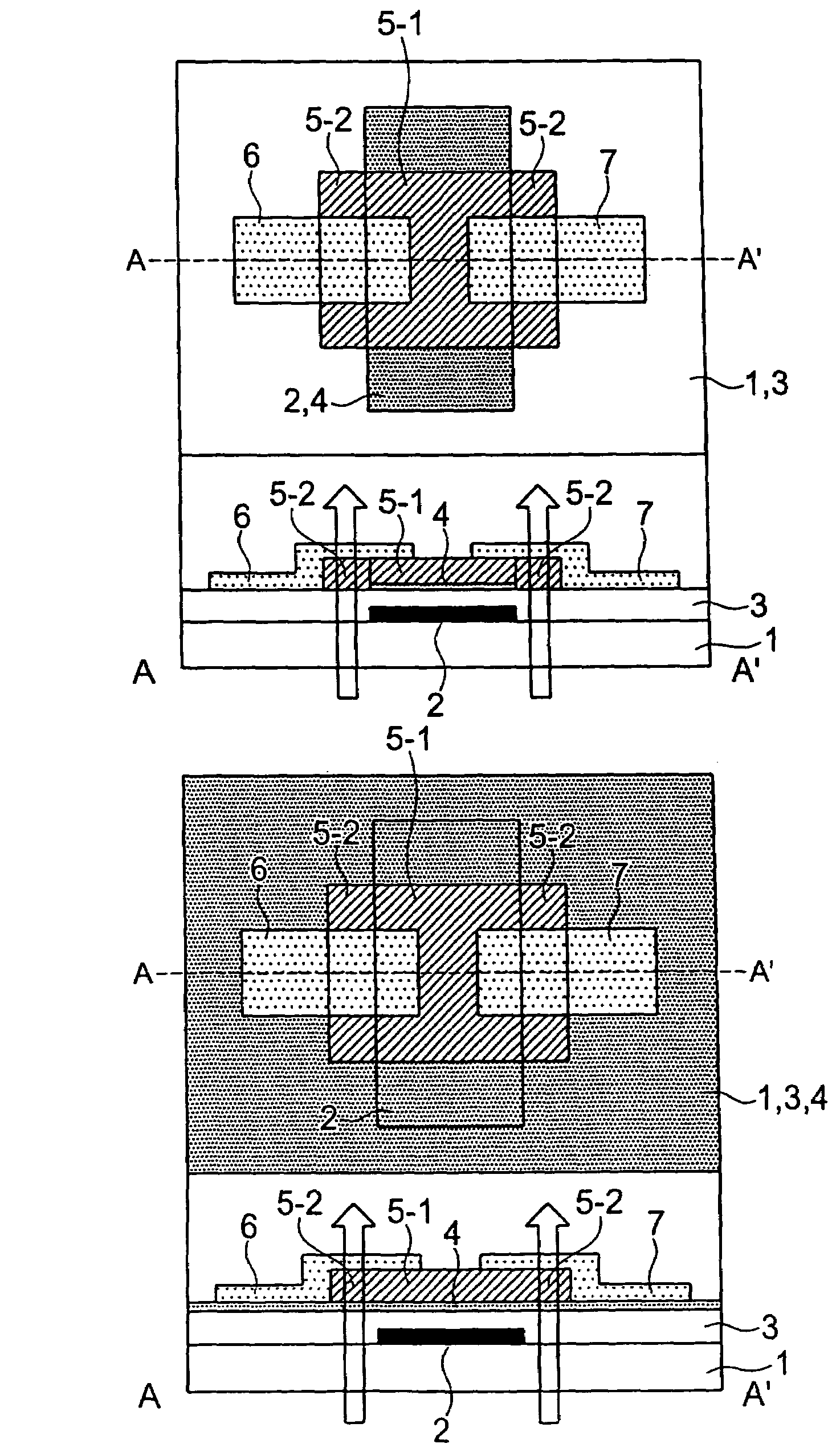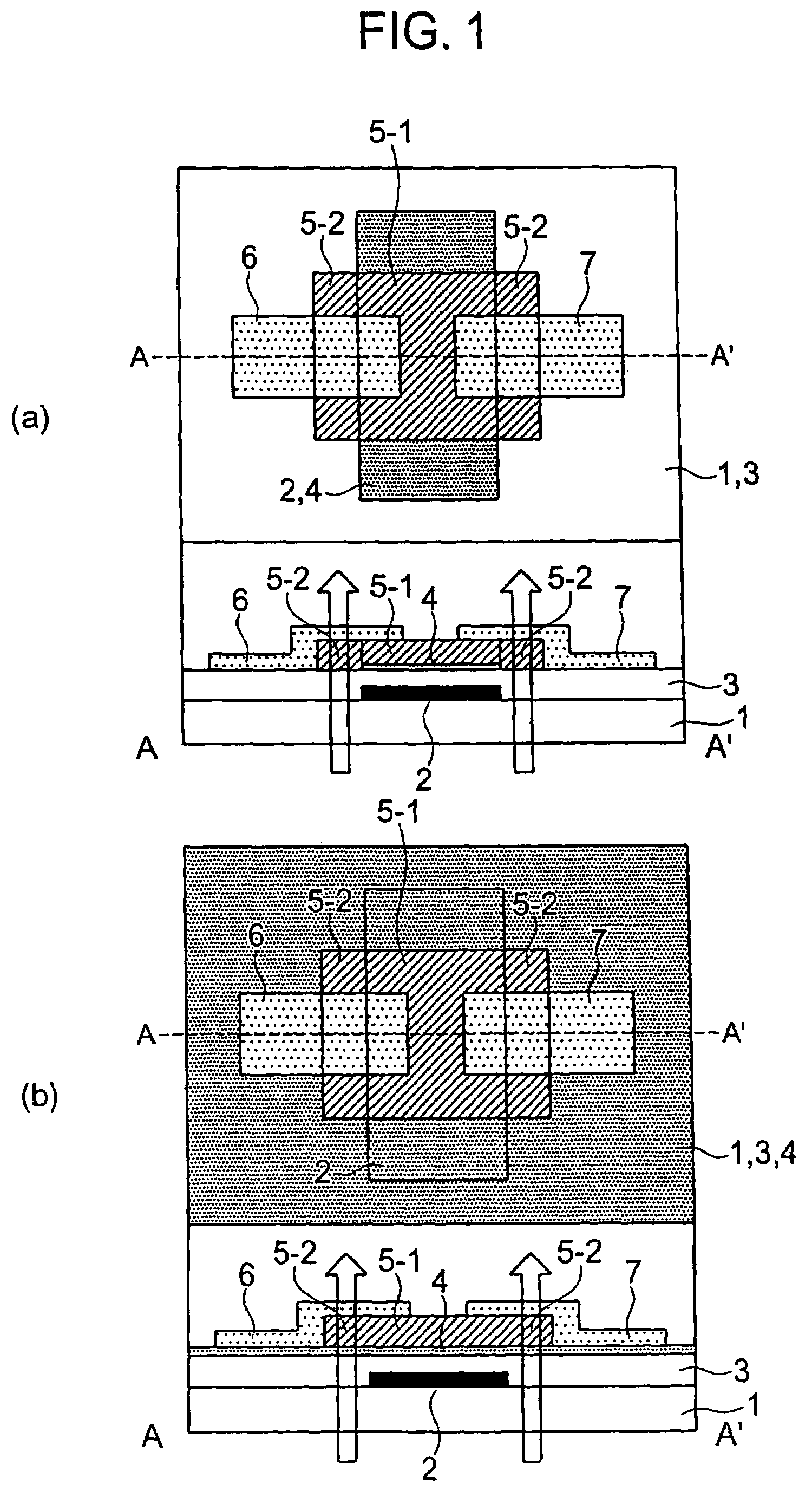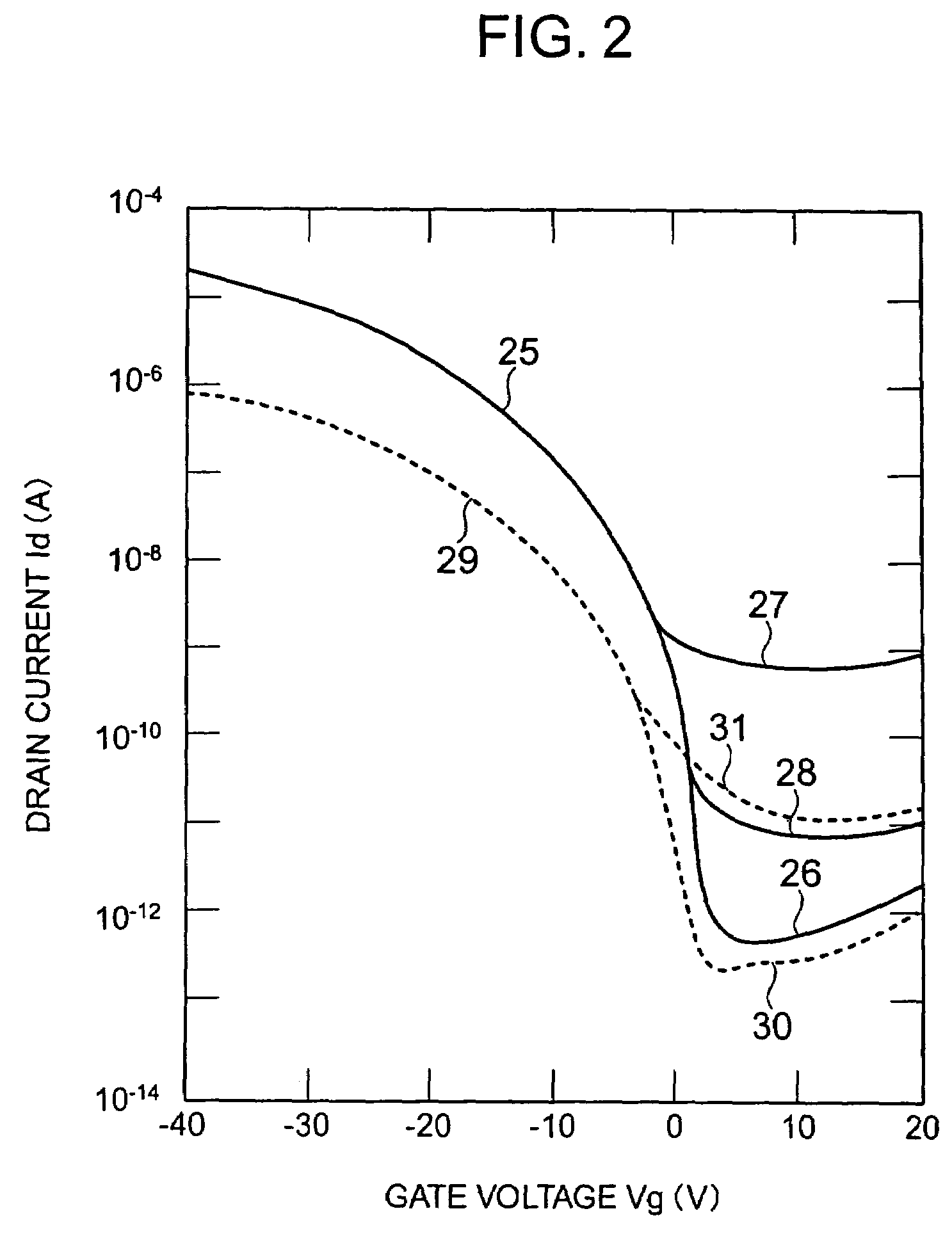Thin film transistor, display device and their production
a thin film transistor and display device technology, applied in transistors, thermoelectric devices, nano-informatics, etc., can solve the problems of increasing light leakage current, low pattern accuracy of electrodes, and adverse effects, and achieve the effect of improving the orientation order of organic semiconductor molecules
- Summary
- Abstract
- Description
- Claims
- Application Information
AI Technical Summary
Benefits of technology
Problems solved by technology
Method used
Image
Examples
embodiment 1
[0035]FIG. 1 is a plan view and a sectional view of the thin film transistor which is an embodiment of the present invention. The figure is a plan view of the thin film transistor and a sectional view (FIG. 1(a)) taken along a straight line A–A′ in the plan view, in comparison with the prior art (FIG. 1(b)). On a substrate 1 of Corning 1737 or a quartz, a gate electrode 2 of Cr with a film thickness of 140 nm and an insulation film 3 of a silicon oxide film with a thickness of 400 nm are sequentially stacked. Then, a self assembled monolayer film 4 of octadecyl trichlorosilane (OTS) having an approximately same pattern shape as a gate electrode is disposed in a gate electrode-projected region on the surface of the insulation film and an organic semiconductor film 5 of pentacene which is representative of organic semiconductor molecules of low molecular type, is stacked further thereon. Here, the portion of the organic semiconductor film disposed in the gate electrode region is denot...
embodiment 2
[0064]FIG. 9 is a plan view and a sectional view of the thin film transistor which is the second embodiment of the present invention. In this embodiment, drain / source electrodes 6 and 7 are formed by applying and burning an electroconductive ink made of a liquid material containing at least one of metallic microparticles, a metallic complex or an electroconductive polymer, with the use of a so-called bottom contact structure of forming an organic semiconductor film 5 after forming the drain / source electrodes 6 and 7. For the electroconductivity ink is required such a property that the ink applied outside a gate electrode-projected region, while being repelled by the liquid repellency of a SAM 4, does not infiltrate into the gate electrode-projected region, and the ink has only to be a liquid material showing adequately low resistance value after being baked. Particular examples of these materials employed include a solution in which metallic ultra-fine particles with diameters of 10...
embodiment 3
[0066]FIG. 10 is a plan view and a sectional view of the thin film transistor which is the third embodiment of the present invention. The present embodiment shows an example of forming an insulation film 3 in the thin film transistor of the embodiment 2, by anodically oxidizing a gate electrode. The gate electrode 2 is formed by forming a metallic thin film with a thickness of 200 nm made of Ta or Al on a glass substrate 1 with DC magnetron sputtering, and then processing it with photolithography. The insulator film 3 made of an oxide film with a thickness of 400 nm is formed with anodic oxidation in which DC voltage is applied. On the insulation film 3, drain / source electrodes 6 and 7 are formed self-aligned with the gate electrode 2 by forming selectively a SAM 4 in a gate electrode-projected region with the method described in the embodiment 1, and by employing a process of coating the material similar to the embodiment 2. Finally an organic semiconductor film 5 is formed in a si...
PUM
| Property | Measurement | Unit |
|---|---|---|
| temperature | aaaaa | aaaaa |
| thickness | aaaaa | aaaaa |
| thickness | aaaaa | aaaaa |
Abstract
Description
Claims
Application Information
 Login to View More
Login to View More - R&D
- Intellectual Property
- Life Sciences
- Materials
- Tech Scout
- Unparalleled Data Quality
- Higher Quality Content
- 60% Fewer Hallucinations
Browse by: Latest US Patents, China's latest patents, Technical Efficacy Thesaurus, Application Domain, Technology Topic, Popular Technical Reports.
© 2025 PatSnap. All rights reserved.Legal|Privacy policy|Modern Slavery Act Transparency Statement|Sitemap|About US| Contact US: help@patsnap.com



